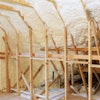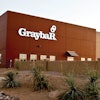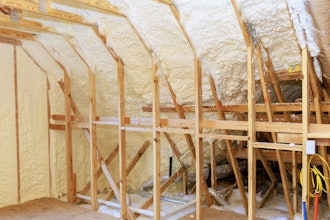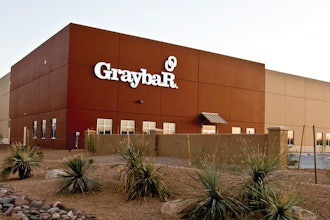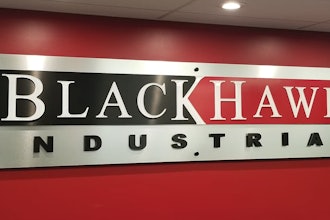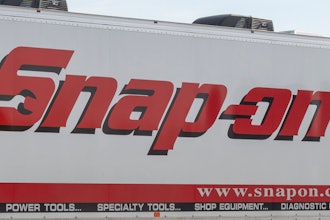AML - Data Collection Handhelds & Kiosks
800.648.4452
www.amltd.com
www.amlkiosks.com
Weighing the Pros and Cons of
Barcode Data Collection Methods
When planning to deploy new data collection
system at your company, there are a lot of
points to consider before signing on the dotted
line. So prior to making the investment, assess
the unique operational needs of your company.
Analyze your business process requirements
and the technology infrastructure. Those tasks
may seem daunting, but it will ultimately mean
the difference between extreme frustration and
a sense of accomplishment once the solution is
deployed. Having the right technology in place
will mean the job gets done with the desired
results that fit your overall business goals.
Once you have that knowledge in place on
which to base your decision, you need to know
which options are available. Fundamentally
speaking, there are three types of barcode data
collection methods that should be considered:
Batch Data Collection
A batch data collection device stores data
directly on the device. As the data is scanned
or keyed in, it stays in the memory of the
device until such time it can be connected
to a computer and uploaded. Afterwards the
data can be erased, freeing the memory of the
device for its next use.
Pros:
WLAN is not necessary: ► Because the
information is stored on the device and
then uploaded or “batched” to a
computer over a wired connection, such
as USB, there is no need for a wireless
infrastructure in the facility.
Remote use: ► It can also be used in
remote areas where wireless
connectivity may not be an option at all.
Low cost: ► The device itself is a smaller
investment than a Wi-Fi equipped
device because there is no radio. For
the same reason, battery life tends to be
better as well.
Cons:
Software: ► A small software program or
application must be produced and
loaded onto the device in order to
generate the screen prompts telling
the operator to scan or enter data. This
can usually be accomplished with a
program generation tool that can be
used by non-programmers, but still
takes some time and thought to properly
execute.
Not real time: ► This means that the
information is not available to be
processed by the host software
application until it has been uploaded
to the computer, and then imported into
the host package. Until the data is
uploaded, it is still somewhat vulnerable
should the device get damaged or
destroyed.
The importance of understanding your options
before selecting a device
AML - Data Collection Handhelds & Kiosks
800.648.4452
www.amltd.com
www.amlkiosks.com
Low-volume: ► Batch data collection
devices may not be the best choice for
a receiving application in a high-volume,
high-velocity distribution center where
the information is needed on a more
real-time basis. They are limited to
relatively simple applications such as
physical inventory counts.
Terminal Emulation (TE)
The use of wireless data collection (Wi-
Fi) is the real-time alternative to batch data
collection. The handheld devices can be almost
identical, except that the wireless device will be
equipped with a radio for communicating over
the wireless LAN.
A simple and reliable methodology for real-time
data transfer is called Terminal Emulation (TE).
The basis of TE is that handheld computers
can actually emulate “dumb terminals” when
connected to a server over the WLAN. It is
an almost effortless way to send text-based
screens down to handheld devices, providing
information to the user and prompting them
for scanned or keyed data. The only software
application running on the handheld device
is the software used for emulating the “dumb
terminal,” hence the term “terminal emulation.”
Pros:
Ease of use: ► Handheld devices
designed specifically to run TE software
are inherently simpler. This is because
they will typically only run the TE client,
connect to a server, and login to the
host application. Since no other options
are presented, it’s even easier to use.
Cost efficiency: ► TE software can
actually run efficiently on slower pro-
cessors that require less memory and
consume less energy (battery). Because
the screens on TE devices are almost
always text-based, a color display with
touch panel is rarely necessary, further
reducing the cost and energy
requirements.
Con:
Lack of versatility: ► The Downside to
TE handheld devices is that it can only
be a TE device. It can never run a true
browser or any software developed
for a Windows® environment, meaning
it can’t run third party packages like
device management software. If
the chance exists that the host software
application might change in the near
future requiring a web browser or
some other Windows®-based client,
then a dedicated TE device might not be
the best option for the long term.
Most handheld computers are capable of
running TE software. In fact, some come
equipped with it already loaded. However,
it’s important to know that not all handheld
computers are alike. Some are specifically
designed to be terminal emulation devices only,
while others are more powerful Windows®
devices that are largely overkill when running
TE software.
Windows® Architecture
A typical Windows®-based handheld computer
will have a microprocessor speed of anywhere
from 400 to 800 MHz and a minimum memory
configuration of 128MB of RAM and 128MB of
ROM.
The vast majority of handheld computers
available today come equipped with a variant
of either Windows® CE or Windows® Mobile
(now Windows® Embedded Handheld). These
devices are quite literally computers in every
sense of the word in that they can run software
programs that were designed for their particular
operating system and hardware configuration
like screen size, keypad, etc. This software
might be a “canned” Windows® application like
Internet Explorer®, or third party applications
like TE clients. It might also be custom software
written to connect and communicate with a spe-
cific host software package running on a server.
The point is that a handheld computer becomes
whatever its application software makes it — be
AML - Data Collection Handhelds & Kiosks
800.648.4452
www.amltd.com
www.amlkiosks.com
it a web browser, a TE device, a route account-
ing tool, etc.
Pro:
Versatility: ► As long as the software
exists or can be written, the Windows®-
based handheld computer can become
a powerful tool. They are generally
available in a wide range of form fac-
tors from semi-rugged PDAs to super-
tough handhelds and tablets designed
to withstand even the worst conditions,
including hazardous or even explosive
environments.
Cons:
Software costs: ► The software may
or may not exist. So, it may have to be
purchased or even written. It is a very
common practice to run TE software on
a Windows® device, but in most cases,
the computing power is wasted. You
may invest more in this type of device,
but “dumbing it down” into a TE device
also wastes money.
Complexity: ► A Windows® device is not
designed to be dedicated to one spe-
cific purpose. It may have to be “locked
down” to remove options that the user
doesn’t need to see or access. Taking a
tool that is designed to be versatile, and
then deploying it in such a manner that
it is dedicated to a single task, is some-
times harder than it first appears.
The most important part of any discovery pro-
cess is to first understand what options exist,
and then selecting the option that is the most
ideal for meeting the specific needs of the appli-
cation. Whether or not it makes sense to “fu-
ture-proof” by purchasing equipment that might
have more features and capabilities than what
is currently necessary, is a business decision
that has to be made on a case-by-case basis.
Sponsored by:
AML was founded in 1983 to respond to a
need in the barcode data collector marketplace
for high performance, easy-to-use, and cost-
effective barcode and data collection products.
Our goal is to provide sensible solutions for
mission critical activities, to improve efficiency
and productivity, and to make barcode data
collection applications worry-free.
We believe there is more to buying a product,
than just the product. It’s also the service and
support that is available before, during, and
after the sale. It’s being able to communicate
when you need to, and get action and
responses that work for you. It means not
being at the mercy of anyone, but rather being
the recipient of stellar customer service and
support. That’s AML.
Our products are currently in use by more
than 10,000 customers across North America
and Europe. Our customers range from small
Mom-and-Pop companies, to emerging SMBs,
to large corporations such as Sherwin-Williams,
Target, Radio Shack, Avaya, Lazy Boy, General
Electric, Family Dollar, Ethan Allen and many
more. AML means “American Made”. All our
products are engineered, manufactured, and
serviced at our Dallas-area facility.
Phone: 1-800-648-4452
Email: [email protected]
Weighing the Pros and Cons of Barcode Data Collection Methods
When planning to deploy a new data collection system at your company, there are a lot of points to consider before signing on the dotted line. So prior to making the investment, assess the unique needs of your company. Analyze your business process requirements and the technology infrastructure. Those tasks may seem daunting, but it will ultimately mean the difference between extreme frustration and a sense of accomplishment once the solution is deployed. Having the right technology in place will mean the job gets done with the desired results that fit your overall business goals.
Latest in Home

